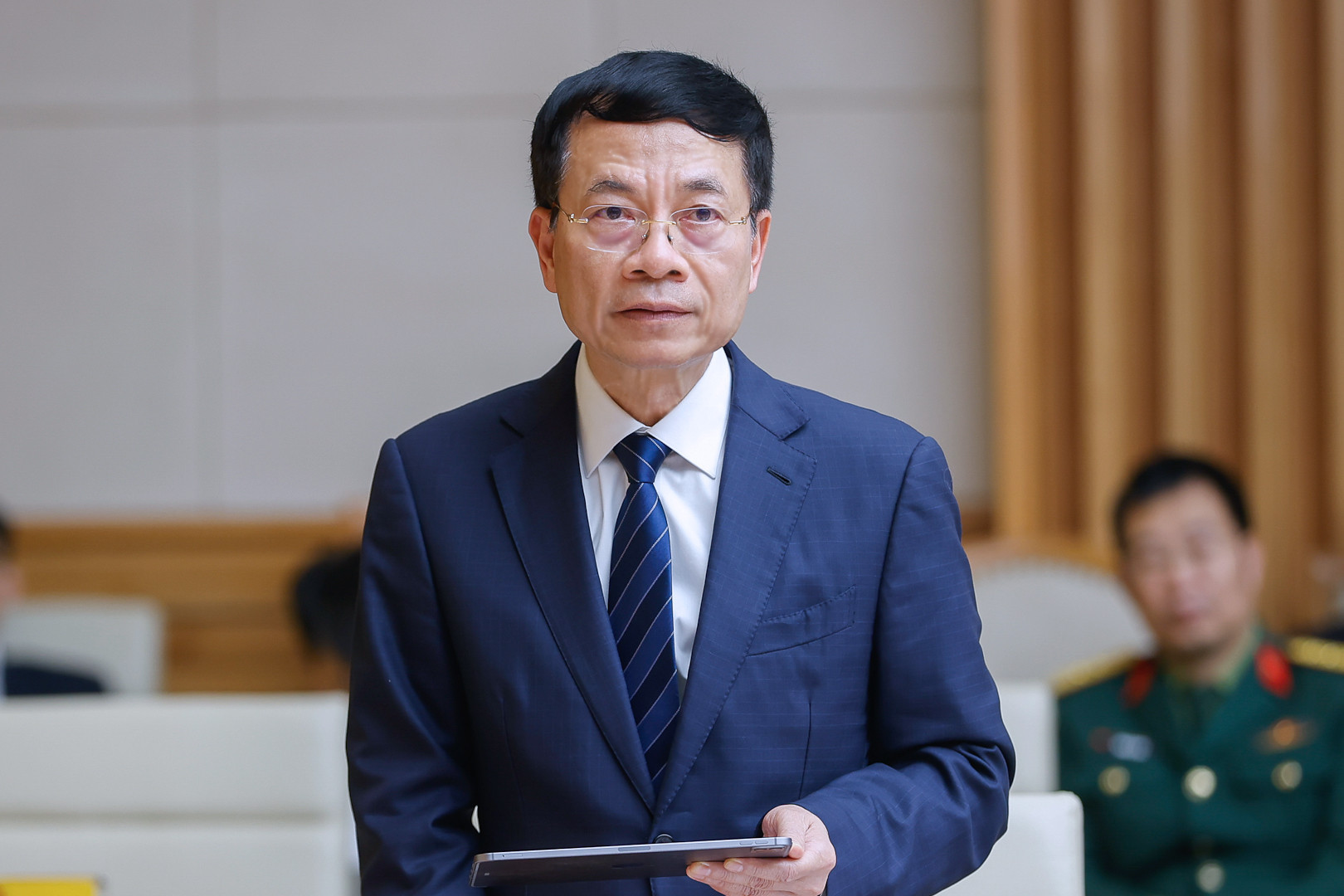
Minister of Information and Communication Nguyen Manh Hung
The conference, held on February 11, discussed tasks and solutions to gain a GDP growth rate of 8 percent or higher in 2005, setting a momentum for double-digit growth rates in the following years.
The conference also aimed to implement the Politburo’s Resolution 57 on breakthroughs in the development of science and technology, innovation, digital transformation, and the government’s action program to execute Resolution 57.
The government's action program has outlined seven groups of tasks with 142 specific duties for ministries, sectors, agencies, and localities. The action program aims to make science and technology, innovation, digital transformation, and high-quality human resources development become the main drivers of economic growth, ensuring rapid and sustainable national development.
The Prime Minister emphasized that the development of science and technology, innovation, and digital transformation is a strategic choice and a top priority. All sectors and government levels within the political system must engage in the process.
Creative, modern workforce
Talking about the outstanding achievements of science and technology, and innovation contributing to economic growth, Minister of Planning and Investment Nguyen Chi Dung remarked that the widespread implementation of Project 06 has accelerated the construction of digital infrastructure, serving the digital government, economy, and society.
Modern scientific and technological achievements have been effectively applied, directly contributing to key economic sectors. The agricultural sector has applied many high technologies to increase productivity and product quality, boosting export turnover.
In the healthcare sector, Vietnam has mastered technology for producing vaccines and medical equipment and developed advanced treatment techniques. In national defense and security, Vietnam has researched, developed, and applied technology to modernize equipment.
The government has proactively promoted emerging high-tech industries. Among these, the semiconductor industry is becoming a field that will determine the competitive technological advantage of many countries.
Within a short time, Vietnam has made impressive strides in cooperating with economies such as the US, South Korea, Japan, Taiwan (China), and Europe in the field of semiconductors, and with major technology corporations like Cadence, Intel, Qorvo, Apple, Marvell, Samsung and Synopsys. Vietnam has been chosen by the US as one of six countries to participate in the Chips Act to develop the global semiconductor supply chain.
Meanwhile, Vietnam has collaborated with NVIDIA to establish an AI research center in Vietnam. Microsoft, Google, Qualcomm, and Meta have also enhanced their cooperation in research and application of AI in Vietnam. Domestic corporations such as Viettel, VinGroup, FPT and CMC have carried out AI research and development projects.
Groundbreaking proposals by MIC
At the conference, Minister of Information and Communications Nguyen Manh Hung stressed that Vietnam needs new growth drivers in science and technology, innovation, and digital transformation. These are the main forces to develop modern production and innovate national governance, and develop the economy and society, preventing the risk of lagging behind.
"Science and technology can only contribute to economic growth if research results are commercialized. To promote commercialization, research results should be owned by research institutions. To stimulate creativity among scientists and engineers, they should be allowed to share 30-50 of the profits from commercialization results," Hung suggested.
Universities must become research centers. To achieve this, universities need a magnet - laboratories. According to Hung, the state needs a large program to develop key laboratories for universities. Each year, the state could allocate 5 percent of the total budget on science and technology, innovation, and digital transformation to key laboratories.
If this work is done continuously for five years, this would fundamentally change the research infrastructure of universities. Currently, the investment in laboratories is less than VND500 billion per year.
To develop science and technology, innovation and digital transformation, large enterprises must take the lead. The state should assign major tasks and national key projects, helping them develop and master strategic technologies. This is also the goal of Resolution 57, aiming to establish 5 world-class digital technology corporations by 2025.
Large enterprises must lead in applying technology and digital transformation. This not only enhances labor productivity, management capacity, and competitiveness, but also creates a market for domestic technology companies, contributing to GDP growth.
Trade and service conglomerates need to shift to technology-industrial-trade conglomerates because only when technology and industry are developed can Vietnam escape the middle-income trap.
